The Bowling Green Opening Day preparations are vital to the playability of the green in the early weeks of the season, but don't try to force things along too much. John Quinn details some of the most important considerations for this critical period in bowls green maintenance
Search for fusarium - 52 results found
Mycorrhizal fungi and turf health, better bowling greens rely on us understanding this.
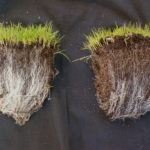
Mycorrhizal fungi and turf health go hand in hand. The symbiotic relationships that exist between our turf grass plants and soil fungi are critical to producing a high performance, perennial grass dominated sward. Here we look at the benefits of mycorrhizal relationships in turf and the techniques greenkeepers can employ to encourage them.
Grass Root Defences: Leatherjacket control in Bowling Greens
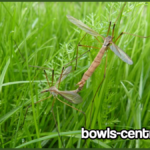
Grasses employ a range of physical, chemical, and indirect defences to protect their roots from insect herbivores. Further research is needed to fully understand these mechanisms and to explore other potential defences, but meantime, we can take some of this knowledge and apply it now to our greenkeeping practices.
PotSi (10 Litre)

PotSi offers the following benefits:
- Stronger plant growth, reducing susceptibility to pests and disease
- Thicker cell walls increase the grass plant's natural defence mechanisms
- Improved leaf erectness which helps with the control of Annual Meadowgrass and improves green speed and smoothness without lowering the height of cut.
- Helps control and reduce iron (Fe) and manganese (Mn) toxicity, common in sandy rootzones where high salt mineral fertilisers have been deployed in the past.
- Reduces susceptibility to attack from fungal pathogens like Fusarium and Dollar Spot
- Reduces susceptibility to attack from root herbivores and sucking insects like Leatherjackets and Chafers
- Increases resistance to drought, heat and cold stress
Sweat the small stuff, for a high performance bowling green this year
If your green maintenance budget was cut in half this year what would you do?
Most clubs when faced with cuts to the greenkeeping budget, will try at all costs to keep the most important work in the plan. Unfortunately, important frequently gets confused with dramatic, which means that the big expense of top-dressing in the spring and autumn usually stays in the plan and I wish it didn’t for all the reasons I’ve explained over many articles.
Meantime, the work deemed less important and which of course is less dramatic is often sidelined or dropped as a result of a fear of what might go wrong if the big, sexy stuff is missed. These big jobs “must be doing a lot of good”, or so the thinking goes, because they’re so expensive and disruptive?
Breaking into the Circle of Decline this Autumn
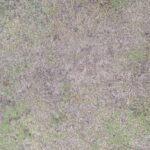
Yes, I'm thinking about Autumn already. Why?, It's all to do with the devastating effect of Localised Dry Patch on many greens this year. I've ever had so many people get in touch. It looks like the more regular occurrence of extreme heat and long dry spells is demonstrating the problem of excessively sandy rootzones, much better than I could ever hope to explain...
Compost Tea, what is it and what can it do for your bowling green?
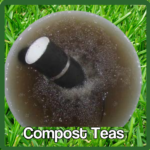
Compost tea is a specially home brewed spray that will boost the microbe population in your bowling green, allowing you to encourage the finer grasses and combat dry patch, disease and thatch, naturally and effectively.
After studying this subject I can say that compost tea is an essential addition to the Performance Bowling Greens Program. Regular use of compost tea can significantly boost soil microbial activity and helps to make better use of fertiliser inputs. Correct formulation of the mixture during brewing will increase the dominance of the fine perennial grasses in the green sward.
By using compost teas, greenkeepers can reverse decades of damage caused by inorganic fertilisers, pesticides and excessive sand top-dressing.
How to painlessly transform greens from Poa annua to bent/fescue
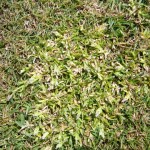
Transitioning your green from Poa annua to bent/fescue is not only critical to achieving a Performance Bowling Green, but is actually a realistic goal. The spongy, soft turf associated with annual meadow grass is less than ideal for bowls. Common wisdom says that this can't be done without major disruption and that even after it is achieved it wont last. This article explains in detail how to undertake the transition of your green from Poa annua to bent/fescue turf and dispels the myths about stressing Poa. This is the way to change your green permanently and without fuss. It will also save your club money on maintenance, so what's not to like?
New Excel Range Organic Base Fertilisers added to shop

The Excel Range uses HumberPalmers highly successful ‘unique’ odourless organic base of plant origin, being free from any weeds or pathogens, but high in Humates and organic carbon.
This, in combination with using high quality mineral nutrients, provides a remarkable ‘natural’ phased release and so increases the efficiency of plant food nutrient uptake.

